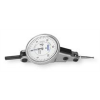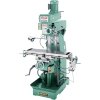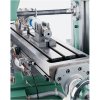Good stuff Madcrate, and the shopswarf site has been help for a whole span of stuff for me over the years.
Schmeky, there's practically nothing you can't do.
There's a guy in Italy who built a completely authentic running (you had to hear his little V12 rev to 10,000 rpm!) Ferrari sports car in about 1/3 scale. It was six feet long as I recall, looked exactly like the real model of Ferrari he'd copied and was authentic right down to the type of leather used for his seats. I had a link to it but don't find it now. I think he said it took him over six years to build in an interview on the news site where I saw it, and when the interviewer asked him what's next after that he said that he had a different model of Ferrari already begun. He said he'd wanted a Ferrari car since he was a child but accepted that he'd never be able to afford to buy one, so he built it.
One of my favorites is this Canadian gun maker -
http://www.craftsmanshipmuseum.com/Kucer.htm
who not only makes guns but also built his own machine tools to do it. Made a small version of Bridgeport mill, a small lathe, a pantograph, a bandsaw, - all of it homemade.
Watch out for the time it takes to make some of the simple tooling you'll need. I think if you add up the time and material cost to make a set of 1/8" parallels, just using the example previously discussed, it'll amount to a lot more than the cost of buying an imported set. This runs true for a lot of 'making own tooling' endeavors and if all your time goes to projects like that you'll never get around to your Ferrari.

Tooling from Poland is often nicer than the Chinese equivalent, BTW, and not always much more expensive. I don't mean the machines - they're nicer too but a WHOLE bunch more expensive.






